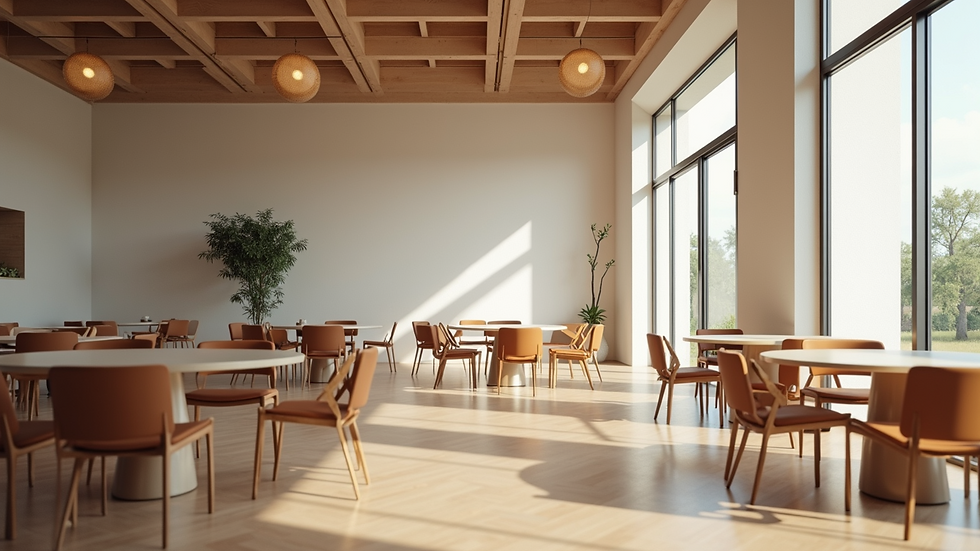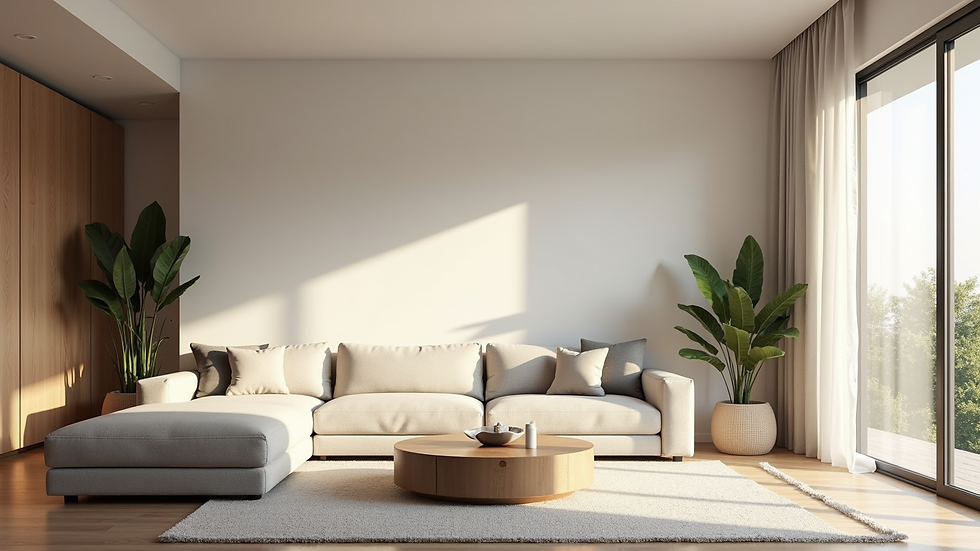Exploring the Subtle Power of Negative Spaces in Interior Design
- Journalising Designers
- Jul 15, 2025
- 4 min read
In the world of interior design, much emphasis is placed on the elements we add to a space. However, just as vital are the areas we intentionally leave empty. This concept, known as negative space, plays a crucial role in enhancing the beauty and functionality of an environment. By understanding how to manipulate negative spaces, designers can create harmonious spaces that invite tranquility and balance.
Negative space refers to the space that surrounds and separates objects in a room. It allows for breathing room, making a space feel more open and less cluttered. Whether in a cozy living room or a sleek modern kitchen, the effective use of negative space can lead to stunning visual results.
With that framework in mind, let's dive deeper into the importance of negative spaces in interior design.
Understanding Negative Space
Negative space is often defined as the empty or blank areas around a focal point in a design. It provides context and enhances interpretation by allowing the viewer to focus on the surrounding elements. In essence, negative space serves as the backdrop that helps define positive elements, be it furniture, artwork, or architectural features.
Utilizing negative space effectively can reveal the designer's vision, creating an intentional layout that speaks volumes about taste and style. By strategically employing this technique, designers can lead the eye and influence the overall flow of a room.
The Psychological Impact of Negative Space
Incorporating negative spaces in interior design has significant psychological benefits. A clutter-free environment typically promotes relaxation and mental clarity. This idea is particularly relevant in spaces where individuals seek refuge from daily stress, such as living rooms and bedrooms.
Simple and airy negative spaces can instill a sense of calm and encourage mindfulness. When one enters a room that has been thoughtfully designed with these concepts in mind, they may feel a sense of peace wash over them, fostering an environment conducive to relaxation and creativity.

Types of Negative Space in Interior Design
Negative spaces can take various forms within a room, each serving its unique purpose. Here are a few common types:
1. Architectural Negative Space
This form of negative space arises from structural elements within a building, such as archways, alcoves, or ceiling heights. These features can create distinctive areas that feel luxurious and expansive.
By focusing on architectural design, one can create sections of abundance amidst a backdrop of emptiness. For instance, an arched doorway leading to a sunlit garden can emphasize the transition while highlighting the beauty of the outdoor space.
2. Functional Negative Space
This type usually serves a purpose. For instance, leaving space between furniture can promote movement and interaction. Avoiding overcrowding helps in defining the functionality of each area.
A well-placed coffee table allows ample room to walk around without veering into obstacles while also serving as an invitation for conversation. By employing functional negative space, designers can enhance usability and comfort.
3. Visual Negative Space
Visual negative space focuses on the relationship between objects on a wall or shelf. Arrangement is crucial here; ensure there is enough space around artwork or decor items to afford them prominence.
Imagining an art piece hung too close to surrounding decor can create visual clutter, ultimately detracting from each element's impact. On the flip side, allowing for breathing room around a statement piece can elevate its significance and provide a more substantial visual impact.

Creating Balance with Negative Spaces
Achieving balance is essential in any space, and negative spaces contribute significantly to this endeavor. Here are a few strategies to cultivate equilibrium between filled and empty areas:
Use Large-Scale Decor
Using oversized decor pieces or furniture can create a striking focal point in a room while allowing surrounding areas to remain sparse. A spacious sofa paired with a large piece of artwork can anchor a room without causing it to feel overcrowded.
Choose Color Wisely
Colors play a crucial role in how negative space is perceived. Lighter colors are typically associated with openness, whereas darker shades can create an intimate vibe. By strategically selecting colors that enhance negative spaces, designers can influence the overall ambiance of a room.
Limit Patterns and Textures
While patterns and textures can beautify a space, overusing them can clutter the eye and diminish the impact of negative spaces. Finding a balance between bold elements and simpler décor will enhance the spatial experience and create a more dynamic design.
Emphasizing Personal Style
Integrating negative spaces allows homeowners to express their personal style while maintaining functional living environments. A minimalist aesthetic embraces the concept of negative space, valuing simplicity and clarity, while a more eclectic style might use negative spaces to frame and highlight diverse decor elements.
By leveraging negative space thoughtfully, individuals can create personalized living areas reflecting their taste and preferences. Such spaces not only evoke comfort but also the essence of one’s lifestyle.
Conclusion
Negative spaces may not be the first thing that comes to mind in interior design, but their impact is profound. Far from being mere emptiness, these spaces serve a vital role in creating harmony and inviting a sense of peace. They are critical to achieving balance, enhancing functionality, and curating personalized environments.
Understanding and using negative space adds depth to a design narrative, ensuring that each choice resonates and contributes to the overall story. Whether you're about to undertake a design project or simply interested in enhancing your living space, don’t underestimate the subtle power of negative spaces.
A thoughtfully designed space should lift the spirits of those who inhabit it, and mastering negative space is a powerful step in pursuing that vision.

